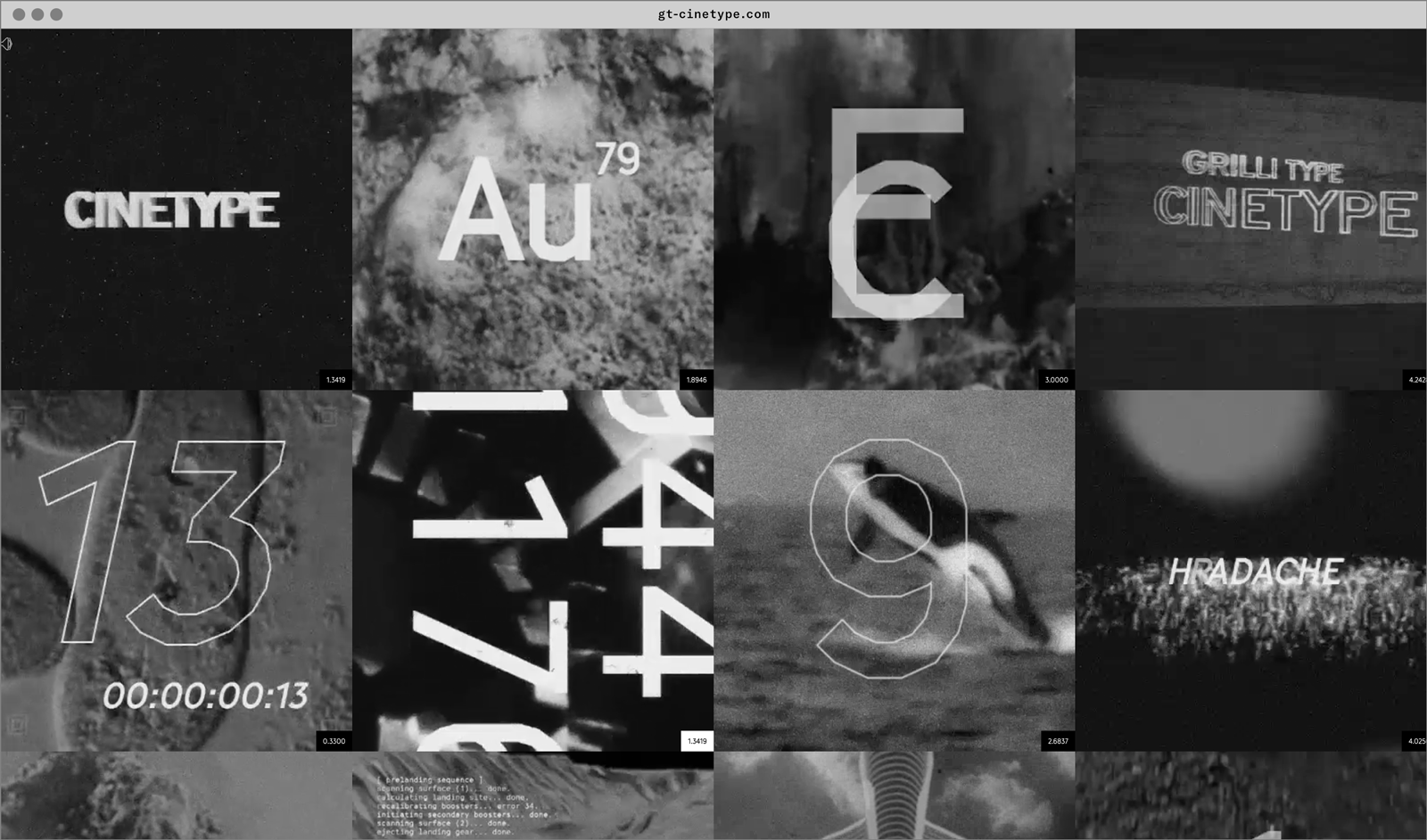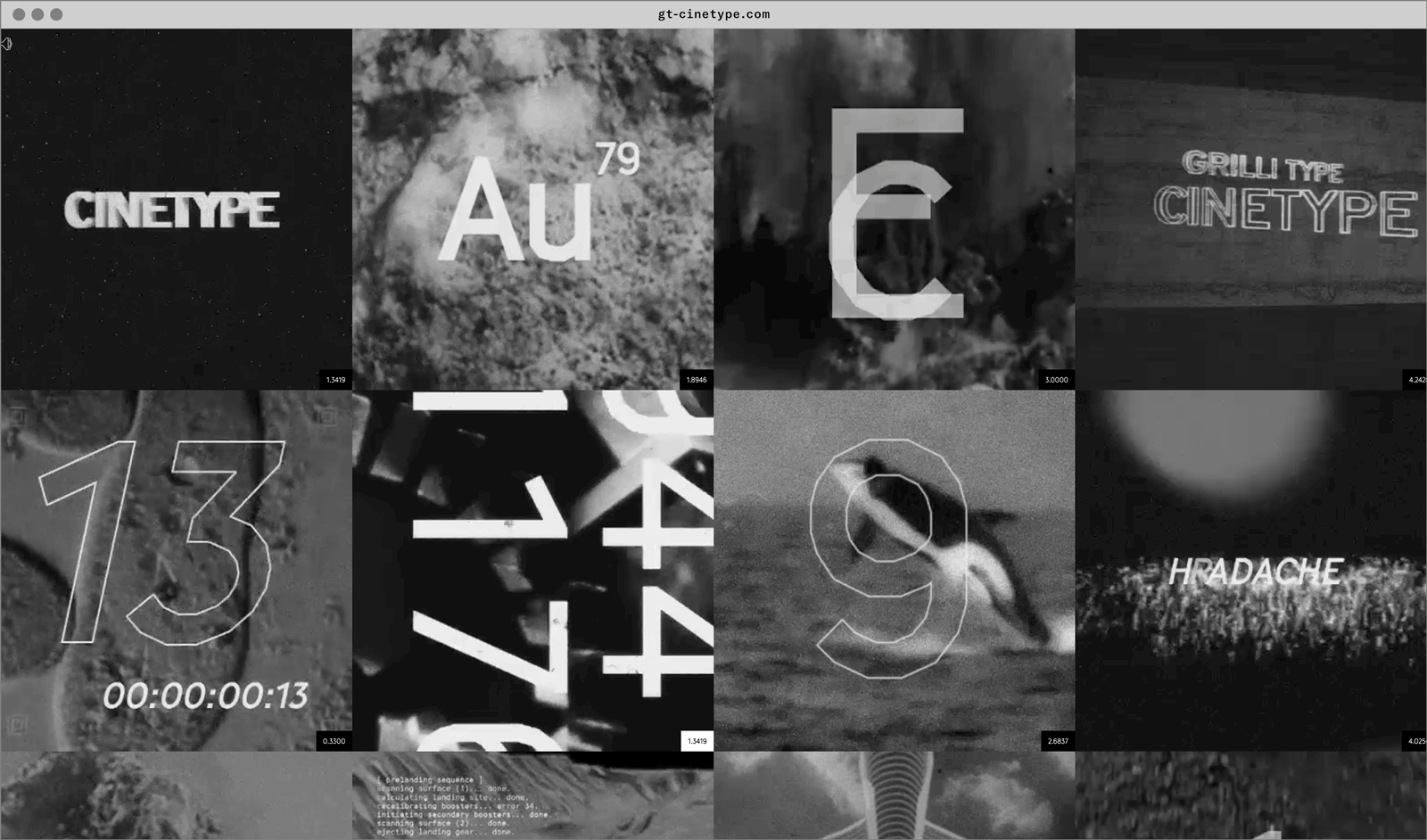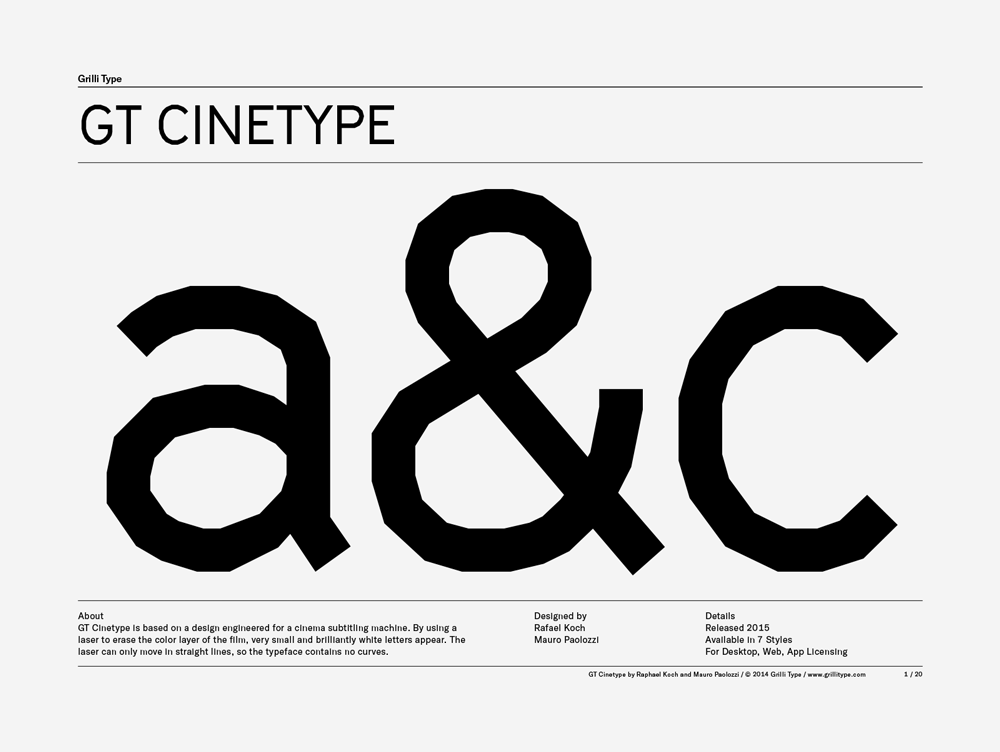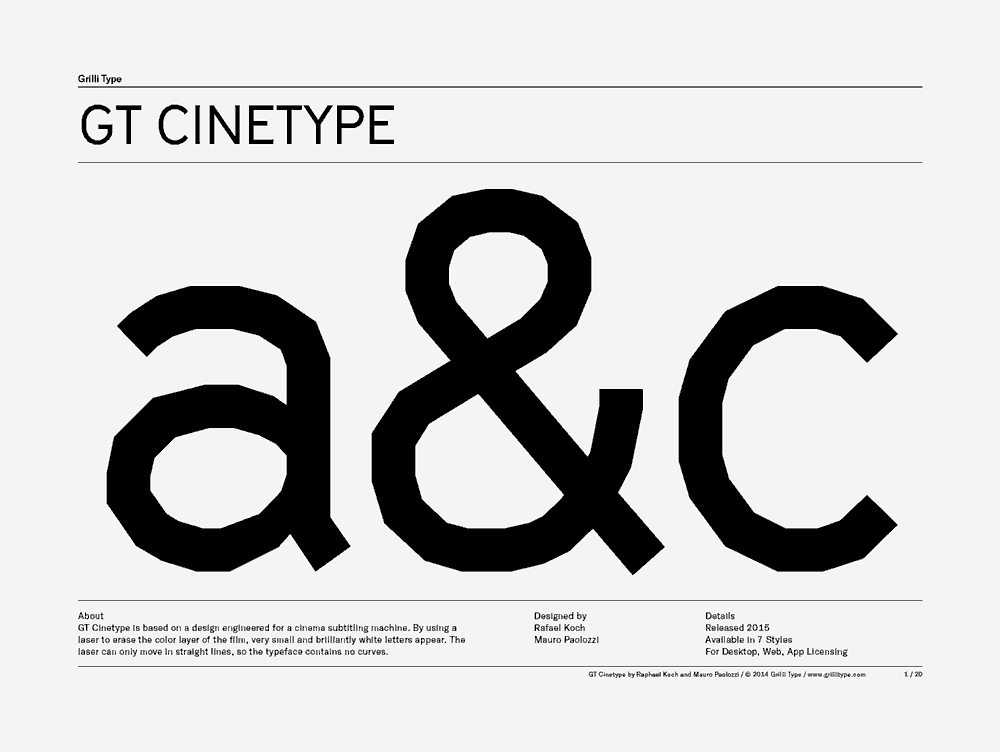GT Cinetype
Family overview
- Light Italic
- Regular Italic
- Bold Italic
- Mono
- LightShowgirls 1995 by Paul Verhoeven with Elizabeth Berkley, Kyle MacLachlan, Gina Gershon
- Light ItalicKing Kong 1933 by Merian C. Cooper with Fay Wray, Robert Armstrong, Bruce Cabot
- RegularC’era una volta il West 1968 by Sergio Leone with Henry Fonda, Charles Bronson, Claudia Cardinale
- Regular ItalicThe Toxic Avenger 1984 by Michael Herz & Lloyd Kaufman with Andree Maranda, Mitch Cohen, Jennifer Babtist
- BoldBefore Sunrise 1995 by Richard Linklater with Ethan Hawke, Julie Delpy, Andrea Eckert
- Bold ItalicLa Haine 1995 by Mathieu Kassovitz with Vincent Cassel, Hubert Koundé, Saïd Taghmaoui
- MonoThe Dark Knight 2008 by Christopher Nolan with Christian Bale, Heath Ledger, Aaron Eckhart
- Settings
Typeface information
GT Cinetype is based on a design engineered for a cinema subtitling machine. By using a laser to erase the color layer of the film, very small and brilliantly white letters appear. The laser can only move in straight lines, so the typeface contains no curves.
Typeface features
OpenType features enable smart typography. You can use these features in most Desktop applications, on the web, and in your mobile apps. Each typeface contains different features. Below are the most important features included in GT Cinetype’s fonts:
- CASE
- Case sensitive forms
(ROBOCOP)
- ONUM
- Oldstyle figures
10.03.1985
Typeface Minisite


- Visit the GT Cinetype minisite to discover more about the typeface family’s history and design concept.
GT Cinetype in use





